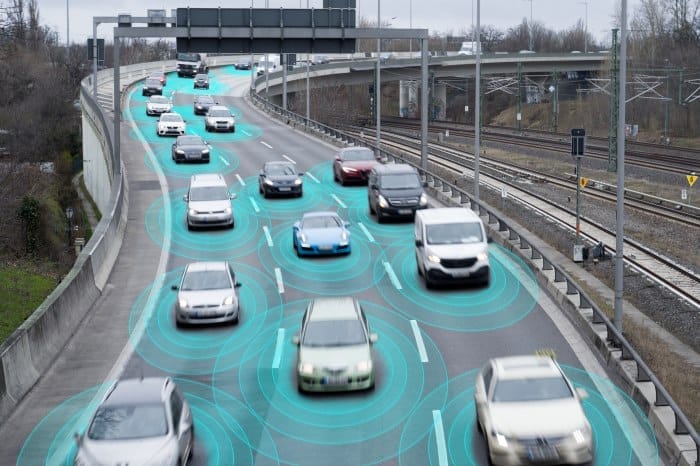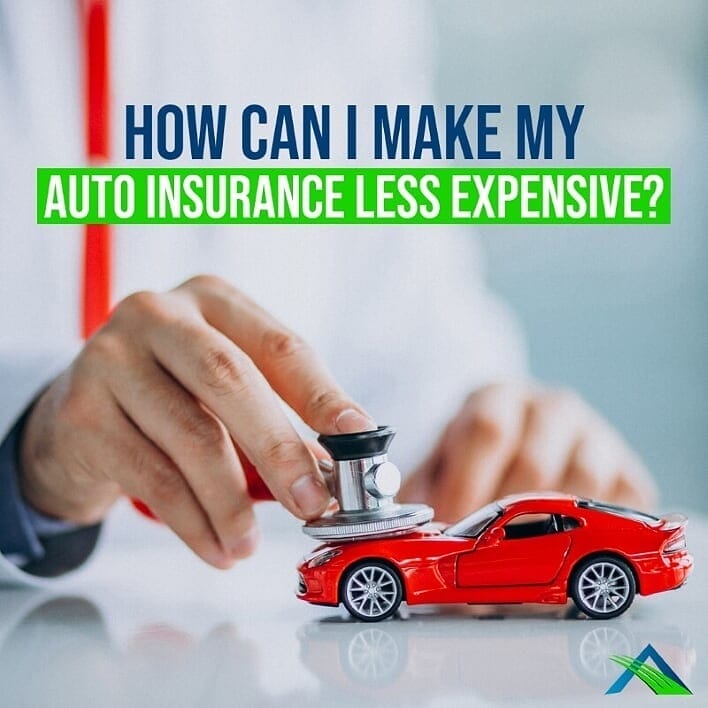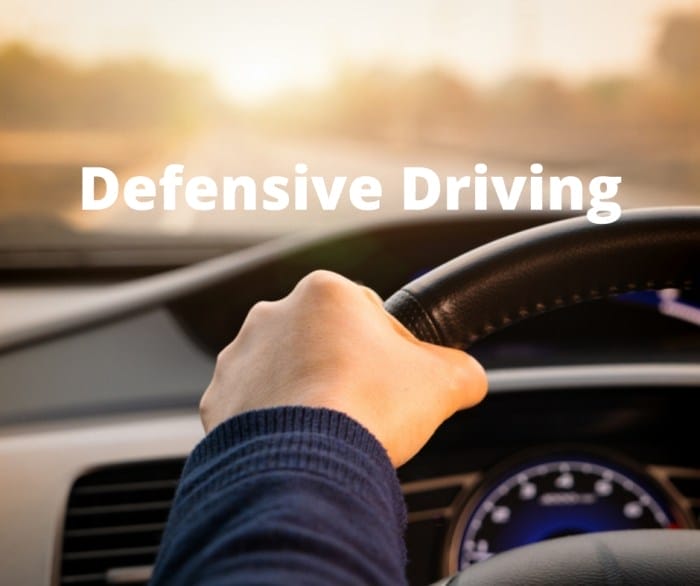Navigating the world of car insurance can be daunting, especially when it comes to finding ways to make it more affordable. Defensive driving, a proactive approach to driving that emphasizes safety and accident prevention, plays a pivotal role in reducing insurance costs.
This guide delves into the intricacies of defensive driving techniques, safe driving records, coverage options, bundling policies, and more, providing you with a comprehensive roadmap to lower your car insurance premiums.
By embracing defensive driving principles, maintaining a clean driving record, and making informed decisions about your coverage, you can significantly reduce your insurance costs. Discover the secrets to becoming a savvy insurance consumer, unlocking savings, and ensuring peace of mind behind the wheel.
Defensive Driving Techniques

Defensive driving is a proactive approach to driving that emphasizes avoiding accidents and protecting oneself from the actions of others on the road. By adopting defensive driving techniques, individuals can significantly reduce their risk of getting into accidents, which can lead to lower car insurance costs.
The key elements of defensive driving include:
- Situational Awareness: Being aware of the surroundings, including traffic conditions, potential hazards, and the actions of other drivers.
- Predictive Driving: Anticipating the actions of other drivers and potential hazards, and taking appropriate actions to avoid them.
- Risk Assessment: Identifying and evaluating potential risks on the road, such as adverse weather conditions, road hazards, and aggressive drivers.
- Hazard Avoidance: Taking actions to avoid potential hazards, such as slowing down, changing lanes, or moving away from potential collision points.
- Smooth and Controlled Driving: Maintaining a steady speed, avoiding erratic movements, and signaling intentions clearly.
Examples of Defensive Driving Techniques
Here are some specific defensive driving techniques that can help prevent accidents:
- Scanning the Road Ahead: Continuously looking ahead to identify potential hazards and traffic conditions.
- Using Mirrors and Blind Spot Checks: Regularly checking mirrors and blind spots to be aware of other vehicles and potential hazards.
- Maintaining Proper Following Distance: Leaving enough space between your vehicle and the vehicle ahead to allow for safe maneuvering and braking.
- Avoiding Aggressive Driving: Refraining from speeding, tailgating, or engaging in road rage.
- Obeying Traffic Laws and Signs: Following speed limits, traffic signals, and road signs to ensure safe and responsible driving.
How Defensive Driving Can Avoid Common Types of Accidents
Defensive driving techniques can help avoid common types of accidents, such as:
- Rear-End Collisions: By maintaining proper following distance and anticipating the actions of the vehicle ahead, defensive drivers can avoid rear-end collisions.
- Intersection Accidents: By paying attention to traffic signals, obeying stop signs, and yielding the right of way, defensive drivers can prevent intersection accidents.
- Sideswipe Collisions: By checking blind spots and signaling intentions clearly, defensive drivers can avoid sideswipe collisions with other vehicles.
- Head-On Collisions: By staying in the correct lane, avoiding risky overtaking maneuvers, and being aware of potential hazards, defensive drivers can reduce the risk of head-on collisions.
- Pedestrian and Cyclist Accidents: By being aware of pedestrians and cyclists, yielding the right of way, and driving at appropriate speeds, defensive drivers can prevent accidents involving pedestrians and cyclists.
Safe Driving Record

Maintaining a clean driving record is crucial in lowering car insurance premiums. A spotless driving history indicates responsibility and a lower risk of accidents, making you a more desirable customer for insurance companies. Conversely, traffic violations and accidents can significantly increase your insurance rates.
Consequences of Traffic Violations and Accidents
Traffic violations, such as speeding tickets or reckless driving, can result in higher insurance premiums. The severity of the violation and the number of offenses committed within a certain timeframe determine the extent of the increase. Accidents, especially those involving injuries or significant property damage, can lead to substantial premium hikes.
Insurance companies view drivers with poor driving records as higher risks, leading to increased insurance costs.
Benefits of a Safe Driving History
A safe driving history can lead to substantial discounts and lower insurance costs. Many insurance companies offer good driver discounts, rewarding policyholders with clean driving records. These discounts can range from 5% to 20% or more, depending on the insurance company and the individual’s driving history.
Additionally, a safe driving record can make you eligible for preferred rates and other benefits, such as accident forgiveness or vanishing deductibles.
Choosing the Right Coverage
Selecting the appropriate car insurance coverage is crucial to ensure adequate protection without overpaying or being underinsured. Understanding the various types of coverage and their benefits is essential for making informed decisions.
There are three main types of car insurance coverage:
Liability Coverage
- Protects you against financial responsibility for injuries or property damage caused to others in an accident you are at fault for.
- Includes bodily injury liability and property damage liability.
- Minimum limits are set by state law, but higher limits are recommended for increased protection.
Collision Coverage
- Covers damage to your vehicle caused by a collision with another vehicle or object.
- Optional coverage, but often required for leased or financed vehicles.
- Deductible applies before coverage kicks in.
Comprehensive Coverage
- Covers damage to your vehicle caused by non-collision events, such as theft, vandalism, fire, hail, or animal strikes.
- Optional coverage, but recommended for newer or more expensive vehicles.
- Deductible applies before coverage kicks in.
When choosing coverage, consider the following factors:
- Your budget: Determine how much you can afford to pay for premiums.
- Your driving record: A clean driving record can result in lower premiums.
- The value of your vehicle: Higher-value vehicles may require more comprehensive coverage.
- Your personal needs and preferences: Consider your risk tolerance and the level of protection you desire.
It’s advisable to consult with an insurance agent to assess your individual needs and determine the most suitable coverage options for your vehicle.
Bundling Policies

Bundling car insurance with other insurance policies, such as home or renters insurance, can provide several advantages and potential cost savings.
Combining multiple policies under one insurance provider often results in discounted rates and simplified management. It eliminates the hassle of dealing with separate policies, premium payments, and renewal dates, ensuring a streamlined and organized insurance experience.
Benefits of Bundling Policies
- Cost Savings: Bundling policies often leads to lower premiums compared to purchasing each policy separately. Insurance companies typically offer discounts for customers who bundle multiple policies, incentivizing policyholders to consolidate their insurance needs with a single provider.
- Convenience: Managing multiple policies under one provider simplifies the insurance process. Policyholders can easily access and track all their insurance information in one place, reducing the risk of missed payments or coverage gaps. It also facilitates communication with the insurance company, as policyholders can address all their insurance-related queries through a single point of contact.
- Streamlined Claims Process: In the event of a claim, having bundled policies can expedite the claims process. The insurance company can efficiently handle and coordinate claims related to different policies, ensuring a smoother and hassle-free claims experience for the policyholder.
Examples of Insurance Companies Offering Bundling Discounts
- Geico: Geico offers multi-policy discounts when customers bundle their car insurance with home, renters, or motorcycle insurance.
- Progressive: Progressive provides discounts for bundling car insurance with home, renters, or boat insurance.
- State Farm: State Farm offers multi-policy discounts when customers combine their car insurance with home, renters, or life insurance.
Utilizing Discounts

Taking advantage of discounts offered by car insurance companies can significantly reduce your insurance premiums. These discounts reward policyholders for various factors, such as safe driving habits, multiple policies, and vehicle safety features.
Identifying Common Discounts
Car insurance companies offer a range of discounts to cater to different customer profiles and driving behaviors. Some common discounts include:
- Multi-Vehicle Discount: Insuring multiple vehicles with the same company often attracts a discount on each policy.
- Good Student Discount: Young drivers with good academic grades may qualify for a discount, recognizing their responsible behavior.
- Anti-Theft Device Discount: Installing anti-theft devices, such as alarms or tracking systems, can lower your insurance premiums.
- Defensive Driving Course Discount: Completing a defensive driving course demonstrates your commitment to safe driving and can lead to a discount.
- Accident-Free Discount: Maintaining an accident-free driving record for a specified period can earn you a discount.
- Low Mileage Discount: Drivers who drive fewer miles annually may qualify for a discount, reflecting the reduced risk of accidents.
- Paid-in-Full Discount: Paying your insurance premium in full upfront, instead of monthly installments, can sometimes attract a discount.
Eligibility Criteria and Tips for Discounts
The eligibility criteria for discounts vary among insurance companies. Generally, to qualify for a discount, you must meet specific requirements, such as maintaining a certain grade point average, completing a defensive driving course, or installing an approved anti-theft device.To find and take advantage of available discounts, consider the following tips:
- Ask Your Insurance Company: Contact your insurance provider and inquire about available discounts. They can provide detailed information on the eligibility criteria and application process.
- Review Your Policy: Periodically review your insurance policy to ensure you are receiving all applicable discounts. Sometimes, discounts may be automatically applied, while others require you to actively request them.
- Shop Around: Compare quotes from multiple insurance companies to find the one that offers the most competitive rates and discounts. Some companies may offer unique discounts that others do not.
By utilizing available discounts, you can potentially save a significant amount on your car insurance premiums while maintaining adequate coverage.
Raising Deductible

A deductible is a specific amount you agree to pay out of pocket before your insurance coverage kicks in. By selecting a higher deductible, you can often lower your insurance premiums. However, it’s important to weigh the pros and cons carefully before making a decision.
Factors Influencing Deductible Impact
The impact of your deductible on your insurance premiums depends on several factors, including:
- The type of insurance coverage (e.g., comprehensive, collision, liability)
- The value of your vehicle
- Your driving record
- Your age and experience
- The insurance company you choose
Deductible Options and Premium Rates
Generally, higher deductibles result in lower premiums. Here’s a table illustrating how different deductible amounts can affect your insurance rates:
| Deductible Amount | Premium Rate |
|---|---|
| $500 | $1,000 |
| $1,000 | $800 |
| $2,000 | $600 |
| $3,000 | $400 |
Pros and Cons of Choosing a Higher Deductible
Pros:
- Lower insurance premiums
- Potential savings over time
Cons:
- Higher out-of-pocket expenses in case of a claim
- May not be suitable for those with limited financial resources
- May affect your ability to get your car repaired quickly
Usage-Based Insurance
Usage-based insurance (UBI) is an innovative approach to auto insurance that rewards safe driving behavior with lower premiums. UBI programs use technology to track driving behavior and provide personalized feedback to drivers, helping them identify areas for improvement and encouraging safer driving habits.
UBI programs typically involve the installation of a telematics device in the vehicle, which collects data on driving habits, such as speed, acceleration, braking, and mileage. This data is then analyzed to assess the driver’s risk profile and determine their premium.
Drivers who demonstrate safe driving habits, such as maintaining a consistent speed, avoiding harsh braking and acceleration, and driving during low-risk times, may qualify for lower premiums.
UBI Programs
Several insurance companies offer UBI programs, each with its unique features and requirements. Some popular UBI programs include:
- Progressive Snapshot: Progressive’s Snapshot program uses a small device plugged into the vehicle’s diagnostic port to collect driving data. Drivers who participate in the program can earn discounts based on their driving habits.
- Allstate Drivewise: Allstate’s Drivewise program also uses a telematics device to track driving behavior. Drivers who sign up for the program can earn discounts and rewards based on their driving performance.
- State Farm Drive Safe & Save: State Farm’s Drive Safe & Save program allows drivers to earn discounts by using a smartphone app to track their driving habits. Drivers can earn discounts for safe driving, such as maintaining a consistent speed and avoiding distractions.
Loyalty and Renewal Discounts

Maintaining a continuous relationship with your insurance provider can lead to cost savings. Many insurance companies offer loyalty discounts to long-term customers, rewarding them for their commitment.
Loyalty Discounts
Insurance companies appreciate customers who stay with them for an extended period, recognizing their loyalty. As a result, they often provide loyalty discounts to these customers. These discounts may vary depending on the insurance company and the duration of the customer’s policy.
Continuous Policy Benefits
Maintaining a continuous policy with the same insurer can provide several benefits, including:
- Lower Premiums: Insurance companies may offer lower premiums to customers who have maintained a policy with them for a certain period, typically three to five years.
- Additional Discounts: Long-term customers may be eligible for additional discounts, such as multi-policy discounts or safe driver discounts.
- Improved Service: Insurance companies often provide better service to long-term customers, understanding their needs and preferences.
Negotiating Renewal Discounts
When your insurance policy is up for renewal, you can negotiate with your current provider to obtain a renewal discount. Here are some tips for successful negotiation:
- Research and Compare: Before negotiating, research and compare rates from other insurance companies. This knowledge will strengthen your negotiating position.
- Highlight Your Loyalty: Emphasize your loyalty to the company and the duration of your policy. Mention any previous claims-free years or safe driving record.
- Request a Discount: Politely request a renewal discount, explaining that you would like to continue your policy with them. Be open to discussing different options or packages.
- Be Willing to Switch: If your current provider is unwilling to offer a satisfactory discount, be prepared to switch to another insurance company that offers better rates.
Telematics Devices

Telematics devices, also known as usage-based insurance (UBI) devices, are innovative tools used by insurance companies to monitor driving behavior and provide personalized feedback to policyholders. These devices gather data about driving habits, such as speed, braking, and acceleration, to assess risk and potentially lower insurance costs.
Insurance companies offer various telematics devices with different features. Some common examples include:
- Mobile Apps: Some insurance companies offer mobile apps that can be installed on smartphones. These apps use the phone’s sensors to collect data about driving behavior.
- Plug-In Devices: These small devices are plugged into a vehicle’s diagnostic port and collect data about driving habits. They may also include features like GPS tracking and crash detection.
- Installed Devices: These devices are permanently installed in a vehicle by a professional. They provide more comprehensive data collection and may be required for certain UBI programs.
The data collected by telematics devices is used to create a personalized driving profile for each policyholder. This profile is then used to determine the policyholder’s risk level and potentially lower their insurance costs. Some insurance companies may also provide policyholders with feedback on their driving habits and tips for improvement.
Shop and Compare
Shopping around for car insurance quotes from multiple companies is crucial to find the most affordable and suitable policy. Insurance rates vary among insurers due to factors such as driving history, age, location, vehicle type, and coverage level.
Obtain Accurate Quotes
To obtain accurate quotes, provide accurate and complete information to each insurance company. Consider factors like deductibles, coverage limits, and optional add-ons to ensure you’re comparing similar policies.
Evaluate Insurance Policies
When evaluating policies, go beyond the premium amount. Consider the insurer’s financial stability, customer service reputation, claims handling process, and any additional benefits or discounts they offer.
Last Word

In the realm of car insurance, knowledge is power. By understanding defensive driving techniques, maintaining a safe driving record, and making informed choices about your coverage, you can effectively manage your insurance costs. Remember, it pays to be a proactive and responsible driver.
Embrace the principles of defensive driving, take advantage of discounts, and shop around for the best rates. By following these strategies, you can navigate the insurance landscape with confidence, ensuring that you’re adequately protected without breaking the bank.
Answers to Common Questions
Q: How does defensive driving reduce car insurance costs?
A: Defensive driving techniques help prevent accidents, resulting in fewer claims and a lower risk profile for insurance companies. This can lead to lower premiums and potential discounts.
Q: What are some common defensive driving techniques?
A: Defensive driving techniques include maintaining a safe following distance, scanning the road ahead for potential hazards, signaling clearly before changing lanes, and avoiding distractions while driving.
Q: How can I maintain a safe driving record?
A: Maintaining a safe driving record involves obeying traffic laws, avoiding reckless driving, and being mindful of your surroundings while driving. A clean driving record can lead to lower insurance premiums and potential discounts.
Q: How can I choose the right car insurance coverage?
A: When choosing car insurance coverage, consider your individual needs, budget, and the value of your vehicle. Liability coverage is typically required, while collision and comprehensive coverage provide additional protection. Determine the right amount of coverage to avoid overpaying or being underinsured.
Q: What are the benefits of bundling car insurance policies?
A: Bundling car insurance with other insurance policies, such as home or renters insurance, can lead to cost savings and streamlined management. Many insurance companies offer discounts for bundling policies, making it a financially savvy choice.



